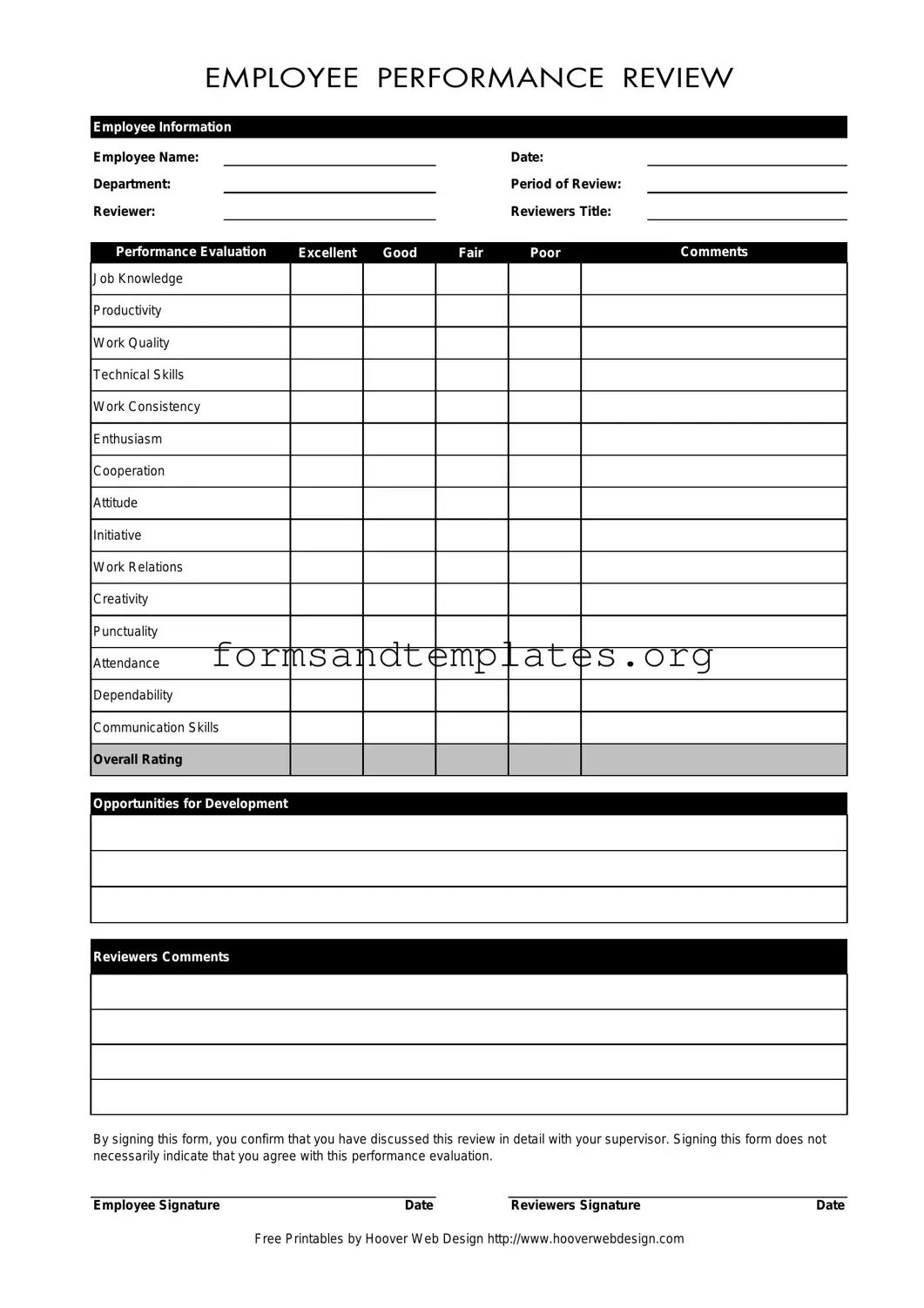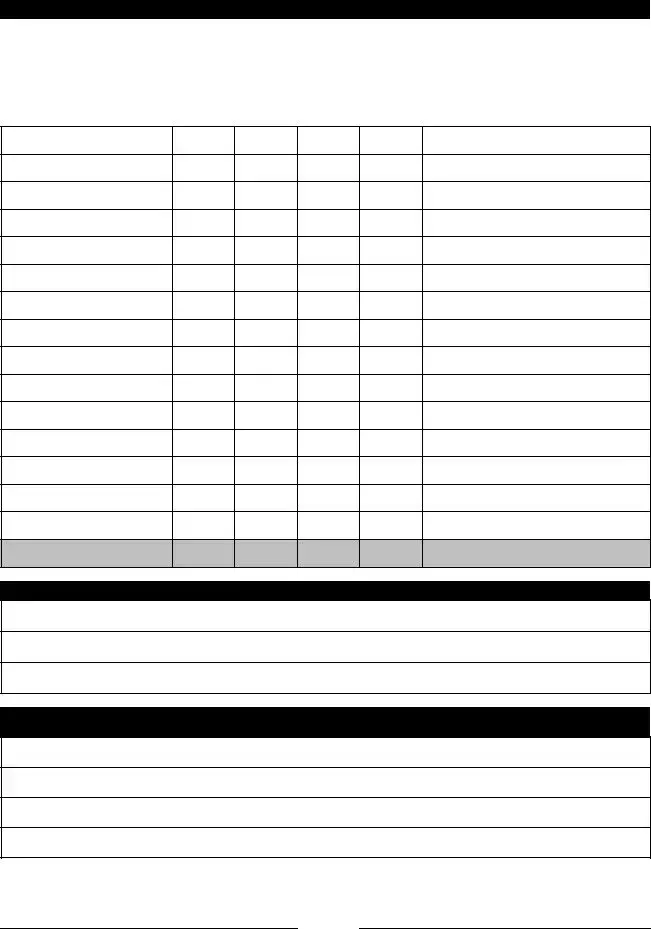The Employee form is designed to evaluate an employee's performance over a specific period. It serves as a structured way for supervisors to assess various aspects of an employee's work, including job knowledge, productivity, and overall performance. This form helps facilitate discussions between employees and their supervisors regarding strengths and areas for improvement.
When filling out the Employee form, you will need to provide several key pieces of information:
-
Employee Name
-
Date of the review
-
Department where the employee works
-
Period of Review, indicating the timeframe being evaluated
-
Reviewer’s name and title
This information helps to ensure that the evaluation is clear and organized.
Performance is evaluated using a rating scale that includes categories such as Excellent, Good, Fair, and Poor. Reviewers will assess various competencies, including:
-
Job Knowledge
-
Productivity
-
Work Quality
-
Technical Skills
-
Work Consistency
-
Enthusiasm
-
Cooperation
-
Attitude
-
Initiative
-
Work Relations
-
Creativity
-
Punctuality
-
Attendance
-
Dependability
-
Communication Skills
Each category allows for comments to provide context for the ratings given.
If you disagree with your performance evaluation, it is important to discuss your concerns with your supervisor. The form includes a section for comments, which can be used to express your perspective. Remember, signing the form indicates that you have discussed the review but does not imply agreement with the evaluation.
The signatures on the Employee form serve as a record of the discussion between the employee and the reviewer. By signing, both parties acknowledge that the evaluation has been discussed in detail. However, it is essential to note that the employee's signature does not indicate agreement with the review.
Yes, you can request a copy of the completed Employee form for your records. It is advisable to keep a copy for future reference, especially if you wish to track your progress over time or if you need to address any issues raised during the review.
After the Employee form is completed and signed, it typically becomes part of the employee's personnel file. This documentation can be used for future performance evaluations, promotions, or other employment-related decisions.
Yes, the form includes a section for Opportunities for Development. This section allows the reviewer to highlight areas where the employee can improve or develop new skills. It is beneficial for employees to review these suggestions, as they can guide professional growth and career advancement.
The frequency of filling out the Employee form can vary by organization. Typically, performance evaluations are conducted annually or biannually. However, some organizations may have different policies, so it is best to consult your HR department or supervisor for specific guidelines.

